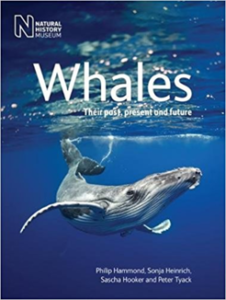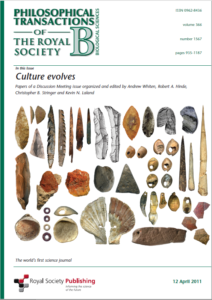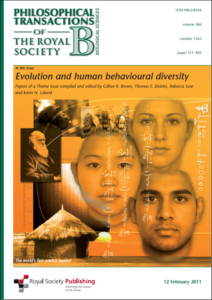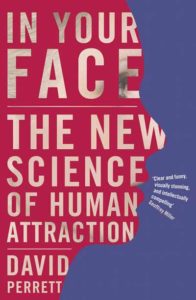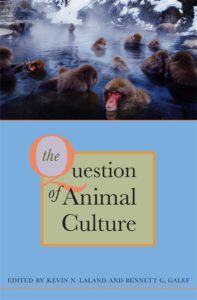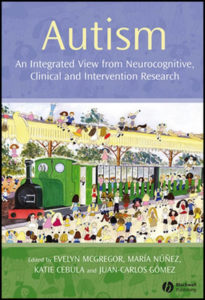Publications
A full list of all publications by members of the Centre is available here, and a list of their books and edited volumes can be found below.
Books and edited volumes
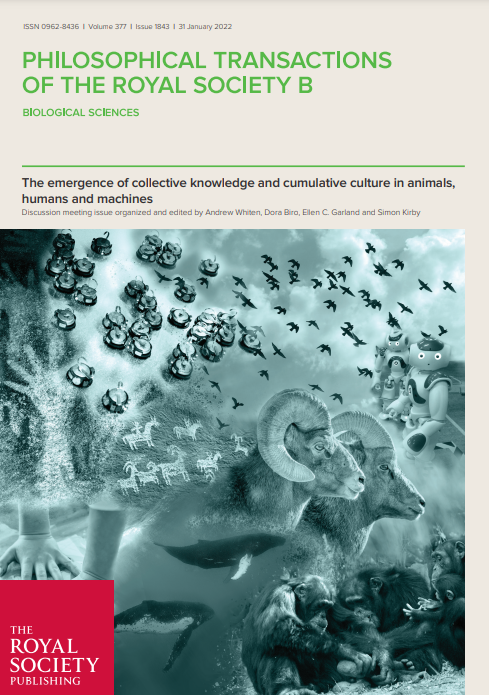
The emergence of collective knowledge and cumulative culture in animals, humans and machines
Philosophical Transactions of the Royal Society B theme issue, 2022
Andrew Whiten, Dora Biro, Ellen C. Garland and Simon Kirby, Editors
Each of us may know much, yet the collective knowledge in our communities is far richer and more powerful when harnessed towards a common end. This theme issue reveals the surprising diversity of contexts over which the emergence and evolution of forms of collective knowledge and cumulative culture have begun to be identified . Manifestations range across the cultural evolution of vocal repertoires in birds and whales, primate conventions and technologies, language evolution, social networking, swarm robotics and humanoid robots.
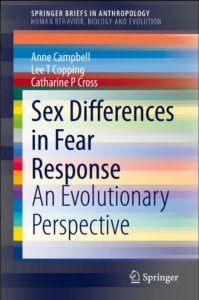 Sex Differences in Fear Response: an Evolutionary Perspective
Sex Differences in Fear Response: an Evolutionary Perspective
Springer Press, 2021
Anne Campbell, Lee T. Coping and Catharine P. Cross
This book reviews the evolutionary forces behind sex differences in fear responses and, crucially, delves into the mechanisms through which sexual selection might have driven sex differences in connection with fear. Fear is an evolved mechanism that helps us stay alive, but is also an emotion experienced more intensely, more frequently, and longer in women than in men. This book therefore asks the following question: Why might evolution have made women more motivated than men to avoid danger? It provides an overview of the brain areas underpinning the experience of fear and evaluates the evidence that these areas manifest sex-specific differences in their structure and function.
Bird Song: Biological Themes and Variations, Second Edition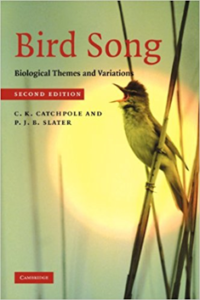
Cambridge University Press, 2008
Clive Catchpole & Peter Slater
Bird song is one of the most remarkable and impressive sounds in the natural world, and has inspired not only students of natural history, but also great writers, poets and composers. Extensively updated from the first edition, the main thrust of this book is to suggest that the two main functions of song are attracting a mate and defending territory. It shows how this evolutionary pressure has led to the amazing variety and complexity we see in the songs of different species throughout the world.
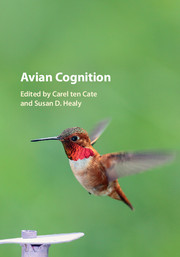
Avian Cognition
Cambridge University Press, 2017
Carel ten Cate & Susan Healy, Editors
The cognitive abilities of birds are remarkable: hummingbirds integrate spatial and temporal information about food sources, day-old chicks have a sense of numbers, parrots can make and use tools, and ravens have sophisticated insights in social relationships. This volume describes the full range of avian cognitive abilities, the mechanisms behind such abilities and how they relate to the ecology of the species. Synthesising the latest research, experts in the field provide insights into experimental procedures, outcomes and theoretical advances.
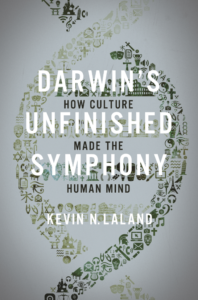 Darwin’s Unfinished Symphony: How Culture Made the Human Mind
Darwin’s Unfinished Symphony: How Culture Made the Human Mind
Princeton University Press, 2017
Kevin N Laland
Humans possess an extraordinary capacity for cultural production, from the arts and language to science and technology. How did the human mind—and the uniquely human ability to devise and transmit culture—evolve from its roots in animal behaviour? Darwin’s Unfinished Symphony presents a captivating new theory of human cognitive evolution. In his book, Laland reveals how culture is not just the magnificent end product of an evolutionary process that produced a species unlike all others—it is also the key driving force behind that process.
Whales: Their Past, Present and Future
Natural History Museum, London, 2017
Philip Hammond, Sonya Heinrich, Sascha Hooker & Peter Tyack
This book dives into the underwater world of the Earth’s largest mammals, drawing on current information and recent discoveries to give the reader a comprehensive overview of this spectacular marine species. The book investigates the ways that scientists monitor the current threats to whales, and the methods they use for conserving their future. Accompanied by images of important cetacean specimens and spectacular photographs, Whales also explains the lifecycle, evolution, diversity and distribution of these majestic ocean giants.
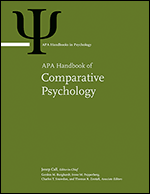 APA Handbook of Comparative Psychology
APA Handbook of Comparative Psychology
American Psychological Association, 2017
Josep Call, Editor in Chief
Comparative psychology is the scientific study of animal cognition and behavior from an evolutionary perspective. This two-volume handbook presents the different aspects of comparative psychology — behavior, cognition, learning, and neurophysiology — in a balanced and exhaustive manner. The 80 chapters cover history, methods, adaptation, evolution, genes, hormones, neural substrates, behaviour, perception, attention, learning, motivation, cognition and emotion.
Evolving Insight
Oxford University Press, 2016
Richard W. Byrne
Evolving Insight develops a new theory of the evolutionary origins of human abilities to understand the world of objects and other people. Defining mental representation and computation as ‘insight’, it reviews the evidence for insight in the cognition of animals. It proposes that the understanding of causality and intentionality evolved twice in human ancestry, with the first time involving behaviour parsing, which is shared with other apes, and the second involving a deeper understanding, which requires language and is unique to human beings.
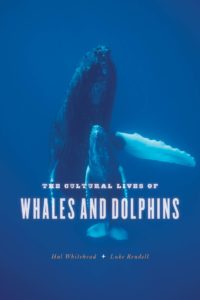 The Cultural Lives of Whales and Dolphins
The Cultural Lives of Whales and Dolphins
Princeton University Press, 2013
Hal Whitehead & Luke Rendell
Just as human cultures pass on languages, tastes in food and in how it is acquired, could whales and dolphins have developed a culture of their very own? Unequivocally: yes. This book open an astounding porthole onto the fascinating culture beneath the waves, showing that cetacean culture and its transmission are shaped by a blend of adaptations, sociality, and the unique environment in which they live. The authors seek to define what cetacean culture is, why it exists, and what it means for the future of whales and dolphins, and ourselves.

Social Learning: An Introduction to Mechanisms, Methods and Models
Princeton University Press, 2013
William Hoppitt & Kevin N Laland
Many animals, including humans, acquire valuable skills and knowledge by copying others, and the study of social learning is a rapidly developing areas of behavioral research. This book provides a comprehensive and practical guide to the research methods of this important, emerging field. The authors describe the latest empirical research from both the laboratory and fieldwork and introduce readers to mathematical methods and models that can be used to detect and quantify social learning strategies.

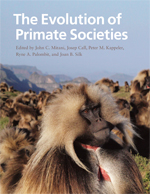
The Evolution of Primate Societies
Chicago University Press, 2012
John Mitani, Josep Call, Peter Kappeler, Ryne Palombit & Joan Silk, Editors
This book compiles thirty-one chapters that review the current state of knowledge regarding the behavior of nonhuman primates. The chapters are written by the leading authorities in the field and organized around the major adaptive problems primates face as they strive to grow, maintain themselves and reproduce in the wild. The final section highlights some of the innovative and cutting-edge research designed to reveal the similarities and differences between nonhuman and human primate cognition.
Philosophical Transactions of the Royal Society B theme issue, 2011
Andrew Whiten, Robert Hinde, Christopher Stringer & Kevin N Laland, Editors
Culture shapes vast swathes of our lives and has allowed the human species to dominate the planet in an evolutionarily unique way. Our ‘capacity for culture’ appears so distinctive among animals that it is often thought to separate humans from the rest of nature and the evolutionary forces that shape it. This edited volume, which resulted from an interdisciplinary meeting by the Royal Society and British Academy, presents a different view arising from recent discoveries of a diverse range of disciplines and focusing on evolutionary continuities.
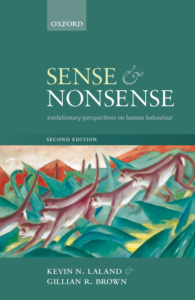 Sense and Nonsense, Second Edition
Sense and Nonsense, Second Edition
Oxford University Press, 2011
Kevin N Laland & Gillian R Brown
Evolutionary theory is one of the most wide-ranging and inspiring scientific ideas and it offers a battery of methods that can be used in interpret human behaviour. However, researchers disagree about the best ways to use evolution to explore humanity, and a number of schools have emerged. The authors provide a balanced and rigorous analysis of five such schools, namely sociobiology, human behavioural ecology, evolutionary psychology, cultural evolution, and gene-culture co-evolution.
Evolution and Human Behavioural Diversity
Philosophical Transactions of the Royal Society B theme issue, 2011
Gillian R Brown, Thomas Dickins, Rebecca Sear & Kevin N Laland, Editors
Human beings persist in an extraordinary range of ecological settings and exhibit enormous behavioural diversity within and between populations. This themed issue examines how evolutionary theory can help us to understand this diversity. The introductory article evaluates how human universals, ecological factors and socially learned information are viewed by the human evolutionary behavioural sciences and argues that greater integration between sub-fields is critical for understanding behavioural diversity.
Fish Cognition and Behaviour, Second Edition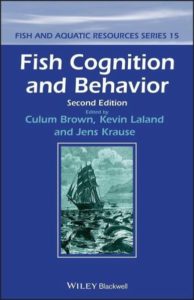
Wiley-Blackwell, 2011
Culum Brown, Kevin N Laland & Jen Krause, Editors
Fishes exhibit a rich array of sophisticated behaviour patterns and impressive learning capabilities that are entirely comparable with those of mammals and birds. Building on the well–received First Edition, and covering all major areas of fish learning, all chapters in this new edition have been revised and updated by an internationally recognized team of contributing authors, with the addition of three brand new chapters, covering personality traits and behaviour, lateralization of cognitive functions in fish, and cognition and welfare.
In Your Face
Palgrave Macmillan, 2010
David Perrett
In our daily lives and in our memories, our mental worlds overflow with faces. But what do we really know about this most remarkable feature of the human body? Why do we have faces at all, and brains that are good at reading them? What do our looks say, and not say, about our personalities? Why are we attracted to some faces more than others? This engaging and authoritative tour of the science face perception reveals the most remarkable findings and in the process demolishes many popular myths.
Harvard University Press, 2009
Kevin N Laland & Bennett Galef, Editors
Fifty years ago, a troop of Japanese macaques was observed washing sandy sweet potatoes in a stream, sending ripples through the fields of ethology, comparative psychology, and cultural anthropology. The issue of animal culture has been hotly debated ever since. This volume gathers key voices in the often rancorous debate to summarize the views along the continuum from ‘Culture? Of course!’ to ‘Culture? Of course not!’ The result is essential reading for anyone interested in the validity of animal culture, and what it might say about our own.
Fifty years ago, a troop of Japanese macaques was observed washing sandy sweet potatoes in a stream, sending ripples through the fields of ethology, comparative psychology, and cultural anthropology. The issue of animal culture has been hotly debated ever since. This volume gathers key voices in the often rancorous debate to summarize the views along the continuum from ‘Culture? Of course!’ to ‘Culture? Of course not!’ The result is essential reading for anyone interested in the validity of animal culture, and what it might say about our own.
Bird Song: Biological Themes and Variations, Second Edition
Cambridge University Press, 2008
Clive Catchpole & Peter Slater
Bird song is one of the most remarkable and impressive sounds in the natural world, and has inspired not only students of natural history, but also great writers, poets and composers. Extensively updated from the first edition, the main thrust of this book is to suggest that the two main functions of song are attracting a mate and defending territory. It shows how this evolutionary pressure has led to the amazing variety and complexity we see in the songs of different species throughout the world.
Autism: An Integrated View from Neurocognitive, Clinical, and Intervention Research
Wiley Blackwell, 2007
Evelyn McGregor, María Núñez, Katie Cebula & Juan Carlos Gómez, Editors
Within autism research, specialism has developed and lines of research have become specialized and isolated. This collection of research on autism spectrum disorders investigates and cross-references a wide range of neurocognitive, clinical, and interventionist perspectives on autistic spectrum disorders research, from functional Magnetic Resonance Imaging studies to naturalistic intervention. Introductory and concluding chapters highlighting major research themes while exploring broader issues on the integration of autism research.
Apes, Monkeys, Children, and the Growth of Mind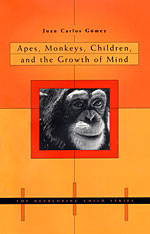
Harvard University Press, 2006
Juan Carlos Gómez
What can the study of young monkeys and apes tell us about the minds of young humans? This fascinating introduction to the study of primate minds identifies evolutionary resemblances—and differences—between human children and other primates. The author examines knowledge of the physical world, causal reasoning, and the contentious subjects of ape language, theory of mind, and imitation, concluding that studying nonhuman primates helps us to understand perplexing aspects of all primate minds.
Social Information Transmission and Human Biology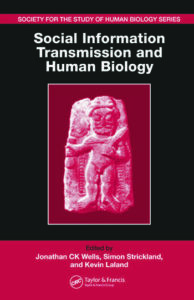
CRC Press, 2006
Jonathan Wells, Simon Strickland & Kevin N Laland, Editors
Recent research has emphasized that an improved understanding of evolutionary issues is beneficial to the improvement of human health. Equally, an improved awareness of how human behavior influences health and reproductive fitness is starting to shed new light on the processes that shape the evolution of human behaviour. This edited volume bridges the gap between research undertaken by those with evolutionary interests and biomedical work undertaken by those dealing with practical issues in human health and demographics.
Fish Cognition and Behaviour, First Edition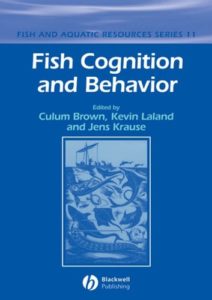
Wiley-Blackwell, 2006
Culum Brown, Kevin N Laland & Jen Krause, Editors
The study of animal cognition has been largely confined to birds and mammals, a historical bias which has led to the belief that learning plays little or no part in the development of behaviour in fishes. Research has begun to redress this misconception, and it is now recognised that fishes exhibit a rich array of sophisticated behaviour with impressive learning capabilities. This edited volume explores all major areas of fish learning, including foraging skills, predator recognition, social organisation and learning, and welfare and pain.
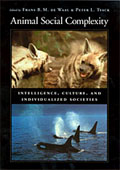 Animal Social Complexity: Intelligence, Culture, and Individualized Societies
Animal Social Complexity: Intelligence, Culture, and Individualized Societies
Harvard University Press, 2005
Frans de Waal & Peter Tyack, Editors
Primatologists have speculated that intelligence evolved as an adaptation to the complicated social milieu of hard-won friendships and bitterly contested rivalries. Yet, social complexity turns out to be widespread throughout the animal kingdom. For example, in many animal societies one individual’s innovation, such as tool use or a hunting technique, may spread within the group, thus creating a distinct culture. This book shows that animals develop a great variety of traditions, which in turn affect fitness and survival.
Animal Innovation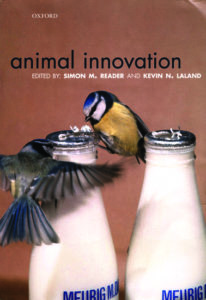
Oxford University Press, 2003
Simon M Reader & Kevin N Laland, Editors
Many animals invent new behaviour patterns, adjust established behaviours to a novel context, or respond to stresses in an appropriate and novel manner. Such innovation is an important component of behavioural flexibility and may have played a central role in avian and primate brain evolution. This edited volume by leading scientific authorities is the first ever book on animal innovation, designed to put the topic of animal innovation on the map and heighten awareness of this developing field.
Niche Construction: The Neglected Process in Evolution
Princeton University Press, 2003
F John Odling-Smee, Kevin N Laland & Marcus W Feldman
Niche construction – defined as the process of organism-driven environmental modification is known – can transform biotic and abiotic sources of natural selection in external environments, generating feedback in evolution on a scale hitherto underestimated. This book extends standard evolutionary theory by formally including niche construction and ecological inheritance as additional evolutionary processes, thus advancing the synthesis of ecology and evolution, and how it offers an evolutionary basis for the human sciences.
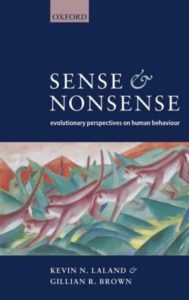 Sense and Nonsense, First Edition
Sense and Nonsense, First Edition
Oxford University Press, 2003
Kevin N Laland & Gillian R Brown
Evolutionary theory, one of the most wide-ranging and inspiring scientific ideas, offers a battery of methods that can be used in interpret human behaviour. However, researchers disagree about the best ways to use evolution to explore humanity. This book provides an introduction to the ideas, methods and findings of five schools of thought that have emerged, namely sociobiology, human behavioural ecology, evolutionary psychology, memetics, and gene-culture co-evolution.
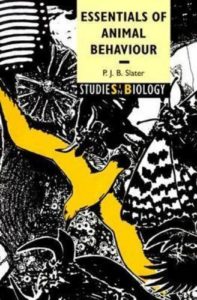 Essentials of Animal Behaviour
Essentials of Animal Behaviour
Cambridge University Press, 1999
Peter J. B. Slater
This book, which provides an introduction to the study of animal behaviour, concentrates on putting across the basic principles as briefly and lucidly as possible with the aid of carefully selected examples from both the recent and classic literature, together with numerous illustrations. It will enthuse readers with this active and exciting area of research, and will be particularly rewarding for all those needing the basics in animal behaviour, behavioural ecology and comparative psychology.
The Thinking Ape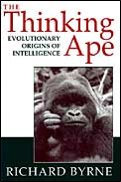
Oxford University Press, 1995
Richard Byrne
‘Intelligence’ has long been considered to be a feature unique to human beings, giving us the capacity to imagine, to think, to deceive, to make complex connections between cause and effect, to devise elaborate strategies for solving problems. However, like all our other features, intelligence is a product of evolutionary change. This book argues that the origins of human intelligence can be investigated by the comparative study of primates, our closest non-human relatives.
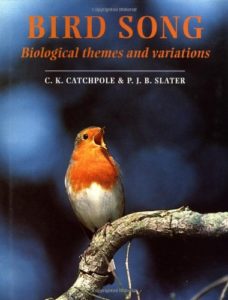 Bird Song: Biological Themes and Variations, First Edition
Bird Song: Biological Themes and Variations, First Edition
Cambridge University Press, 1995
Peter J. B. Slater and Clive K. Catchpoll
Bird song has long been an inspiration to poets, and a delight to many people, but why do birds sing? The subject has been studied extensively in the past few decades, so that there is now hardly an area of animal behaviour research onto which research on song does not shed some light. This book explores the study of bird song from the biological viewpoint, and reviews the large literature written on the subject.
Machiavellian Intelligence, Second Edition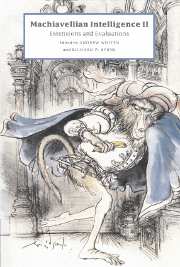
Cambridge University Press, 1995
Andrew Whiten & Richard W. Byrne, Editors
How can the intelligence of monkeys and apes, and the huge brain expansion which marked human evolution, be explained? The Machiavellian Intelligence hypothesis suggests a new answer: that the evolution of intellect was primarily driven by selection for manipulative, social expertise within groups where the most challenging problem faced by individuals was dealing with their companions. This book extends the scope of the original ideas and evaluates them empirically from different perspectives.
Natural Theories of Mind
Wiley Blackwell, 1991
Andrew Whiten, Editor
In our everyday social lives, we routinely understand the behaviour of others by attributing mental states to them. This book draws together from a range of disciplines research into the origins and emergence of this fundamental ability to have a ‘theory of mind’. This volume brings together contributions from child psychologists, comparative psychologists and computer scientists, with others from philosophy and anthropology, on the central topic of the emergence of theories of mind.
Machiavellian Intelligence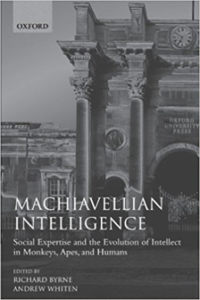
Oxford University Press, 1988
Richard W. Byrne & Andrew Whiten, Editors
According to conventional wisdom, our unique human intellect results from evolutionary pressures for skilled tool use and for communication to enhance co-operation. This book explores a quite different idea: that the driving force was social expertise, allowing subtle manipulation of others within the social group. The need to outwit one’s clever colleagues then produces an evolutionary spiralling of `Machiavellian intelligence’. This edited book brings together the scientific work on the origin of human intellect.
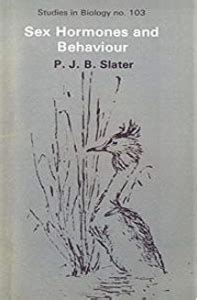 Sex Hormones and Behaviour
Sex Hormones and Behaviour
Edward Arnold, 1978
Peter J. B. Slater
This book gives an account of the ways in which sex hormones affect behaviour. The subject matter lies at the meeting ground of biology and psychology, and the research covered is drawn from both of these disciplines. The book outlines how reproductive physiology affects many aspects of behaviour, from mating and maternal behaviour to fighting and migration. The aim is to extract general principles, while stressing the variety of mechanisms that adapt each species to its particular way of life.
